On 26 August 2020, the National Energy and Utility Regulatory Commission (“NEURC”) finally approved a new methodology for incentive pricing (regulatory asset base regulation) for distribution system operators (“DSOs”). At present, Ukraine uses the cost-plus-tariff setting system for DSOs, which leads to negative consequences for the state of power networks.
The objectives of the reform are the following:
- Promotion of investment into grid modernization by DSOs;
- Improving the quality indicators of power networks;
- Making privatization of Oblenergos more attractive for foreign and national investors.
The NEURC expects that the introduction of incentive pricing will lead to the construction of new power networks and substations, which will reduce the cost and time of connection to power networks for new customers. However, not all electricity market stakeholders support the methodology for incentive pricing in the wording that has been approved by the NEURC.
The approved amendments entered into force on 28 August 2020.
Background
Incentive pricing for DSOs envisages a system of tariff-setting based on medium-term tariff regulation aimed at attracting investments for the construction and modernization of power network infrastructure and the promotion of cost-effectiveness of the electricity distribution companies. The regulations stipulate that DSOs are guaranteed to receive a profit, the amount of which will depend on the total value of the regulatory asset base. This should encourage companies to invest in the modernization of assets.
Ukraine started to initiate the process of reforming its distribution tariff setting methodology in 2013 in order to move towards an incentive based calculation methodology. However, the methodology was never applied in practice.
The NEURC has introduced incentive pricing through amendments to a number of its regulatory acts. However, in its Compliance Note of 1 May 2018 (CN 01/2018 Ukraine), the Energy Community Secretariat assessed the existing regulations and methodologies for network tariff setting and recommended developing the tariff methodology as a single and comprehensive document, replacing the several rulebooks and orders in place.
According to the Compliance Note of the Energy Community Secretariat, the main challenge for incentive-based regulation is to strike a balance between improving cost efficiency and improving/maintaining quality standards. The explicit requirement of the Third Energy Package is to maintain basic fairness and impartiality in considering the legitimate interests of both investors and network users. According to par. 15 of part 2 of art. 3 of the Law of Ukraine “On Electricity Market”, one of the key principles of electricity market operation is non-discriminatory pricing and tariff-setting which reflects economically justified costs.
Main differences between a cost-plus-tariff setting system and incentive pricing
The income of the DSO under the cost-plus-tariff setting system is set by the NEURC as the sum of permitted costs of such a DSO plus the regulatory rate of return. This sum is set by the NEURC for each DSO annually and forms the tariffs for consumers.
Capital costs of DSOs are contained in their annual investment programs which are approved by the NEURC for each DSO. The main problem with the cost-plus system was the absence of incentives for investments and modernization of power networks. DSOs were interested in increasing costs rather than improving efficiency because this way they received a higher tariff and higher regulatory income. There was also a problem with repayment of long-term loans for network modernization, as when the DSO increased its efficiency, the tariff for the next year was reduced.
Therefore, under the cost-plus-tariff setting system, the DSO had no incentives for operational efficiency or to invest in maintaining its networks and improving the quality of services beyond the approved investment program.
At the same time, the main features of incentive pricing are the following:
- Tariffs are set for a pre-arranged period of several years;
- Tariffs contain incentives for compliance with pre-arranged targets of service quality and financial sanctions for their violation.
Rate of return for DSOs and regulatory periods
The new methodology for incentive pricing stipulates a rate of return of 16.74% on the new asset base and a rate of return of 3% on the old asset base.
Such rates of return will be valid for the first regulatory period of 3 years after the transition to incentive pricing. The next regulatory period will be 5 years. The DSOs will be able to transit to incentive pricing from 2021. Such transitions are voluntary, therefore the DSOs will decide for themselves whether to transition to the incentive pricing system or stay on the cost-plus system.
At the same time, the NEURC stated that it will analyze the country’s macro-financial and economic indicators, market balance, the cost of electricity as a commodity, and, if there are positive signals, will return to increasing the rate of return with a simultaneous reduction of the timeframe for achieving power networks’ quality targets.
The market rate of return on the new asset base creates new opportunities for DSOs to attract investments through new instruments in capital markets (both equity and debt).
The rate of return for old and new assets is a key issue that market stakeholders could not agree on during previous attempts to introduce incentive regulation. The old methodology for incentive pricing of 2017 stipulated the same rate of return on the new and old asset base, which amounted to 12.5%.
The rates of return on the new and old asset base can be the same or different, the main thing is to have a balance. If the rate of return on the old asset base is high, there are no incentives to invest (but it is possible to introduce restrictions compelling DSOs to reinvest a proportion of profits). On the other hand, the income on the old asset base can help DSOs to repay the principal loan and any interest on it. The main problem with the 12.5% rate of return was that it was lower than the refinancing interest rate of the National Bank of Ukraine. This means that the cost of loan capital was higher than the rate of return – in fact, there were no incentives for investment (DSOs would then operate at a loss).
Obligations of DSOs within the first regulatory period
The new methodology envisages that in the first regulatory period (3 years) after transitioning to incentive pricing the DSO will have the following obligations:
- Full implementation of the action plan to ensure the reliability of data for monitoring the quality of services (in particular by creating systems of recording outages in power networks of 6-150 kV);
- Annual investment shall be made in an amount not less than the annual amount of depreciation and income from payments for reactive energy, as well as 50% of the profit on the regulatory asset base of the DSO, which is created on the date of the transition to incentive regulation (old asset base), in accordance with the approved investment program.
Valuation of assets in the transition to incentive regulation
The need for the revaluation of assets is based not only on the low value of assets which were insufficiently indexed during periods of high inflation, but also on the need to harmonize the calculation of the value of assets in different companies.
According to the new methodology, the regulatory base of assets, which are established on the date of transition to incentive regulation, must include assets that are directly used to carry out electricity distribution activities.
For revising tariffs in the transition to incentive regulation, a report on the independent valuation of the DSO’s assets shall be conducted in accordance with the Methodology of asset valuation of entities of natural monopolies, economic entities in related markets in the field of combined heat and power generation, as approved by the State Property Fund of Ukraine. The new methodology stipulates that DSOs must provide also a summary information prepared on the basis of the independent asset valuation report, which should contain:
- Data on the value of the DSO’s assets before the application of physical depreciation and optimization coefficients;
- Data on the weighted average of physical depreciation of the DSO’s assets and the total coefficient of asset load and optimization;
- Data on line length (route/circuit) by voltage levels, the total number and capacity of high and separate low voltage substations with weighted average rates on the cost of replacement (reproduction) of these assets, physical depreciation and coefficient of optimization for each such group of assets.
If under the results of the independent asset valuation report the unit value of these assets exceeds by more than 50% the average unit value of similar assets of other DSOs, the DSO, at the request of the NEURC, shall provide relevant explanations and substantiation together with supporting documents agreed by the appraiser who conducted the independent valuation of the DSO’s assets.
Indicators of the quality of power networks
According to the approved methodology, it is assumed that electricity losses in the networks of DSOs should be reduced annually by at least 1% in the 1st class of voltage (commercial consumers) and by 3.5% in the 2nd class of voltage (household consumers). The SAIDI (System Average Interruption Duration Index) should be decreased steadily over 13 years from 466 to 150 minutes in urban areas and from 960 to 300 minutes in village areas. Achievement of the established indicators of the quality of services is transferred from the 8th to the 13th year after the transition to incentive pricing.
At present, the SAIDI rate in some regions of Ukraine exceeds 1,000 minutes, that is more than 16 hours per year per average consumer in the relevant region.
The new methodology also envisages a fine for DSOs for non-compliance with service quality targets. This fine will be up to 20% of the required income, which will encourage the DSOs to improve the quality of services.
Feedback from electricity market stakeholders
The new methodology for incentive pricing has been perceived differently by various electricity market stakeholders. For instance, DTEK, which owns part of DSOs in Ukraine, has criticized the new NEURC’s methodology. They claim that the new approach does not create opportunities to raise external financing for asset upgrades beyond simply cheaper customer connection.
DTEK indicates that the required amount of investments for full a renovation and upgrading of the power network is estimated at USD 1,000–1,200 per km, while the methodology proposed by the NEURC limits investments to about USD 450 per km.
Foreign experience
Energy regulators in European countries establish different incentive pricing systems for DSOs, which generally aim to set certain targets for DSOs to reduce overall operational and capital costs.
Incentive pricing, if properly implemented, encourages DSOs to reduce their costs and modernize their power networks.
The experiences of highly developed countries demonstrate the effectiveness of incentive pricing.
For instance, the Great Britain has halved the costs of DSOs and electricity transmission tariffs in 15 years. In Romania, asset depreciation was decreased from 75% to 48% during 2004-2011, and the level of electricity losses in power networks was reduced by almost half.
Legislation:
1. NEURC’s Resolution “On Approval of Amendments to the Procedure for Determining the Regulatory Asset Base of Entities of Natural Monopolies in the Power Sector” No. 1607 of 26 August 2020;
2. NEURC’s Resolution “On Approval of Amendments to the NEURC’s Resolution No. 1009 of 23 July 2013” No. 1608 of 26 August 2020;
3. NEURC’s Resolution “On Approval of Amendments to the NEURC’s Resolution No. 1029 of 26 July 2013” No. 1609 of 26 August 2020;
4. NEURC’s Resolution “On Approval of Amendments to the Procedure for Establishment (Formation) of Tariffs for Electricity Distribution Services” No. 1610 of 26 August 2020.
Authors: Tetiana Mylenka, Counsel, Head of Energy Practice at Hillmont Partners and Bohdan Novyk, Associate


























